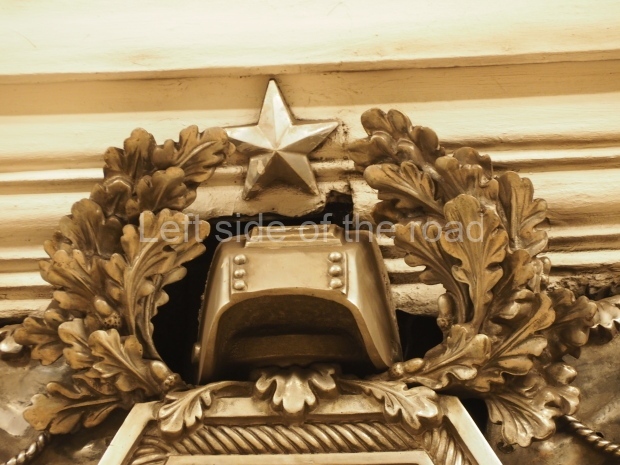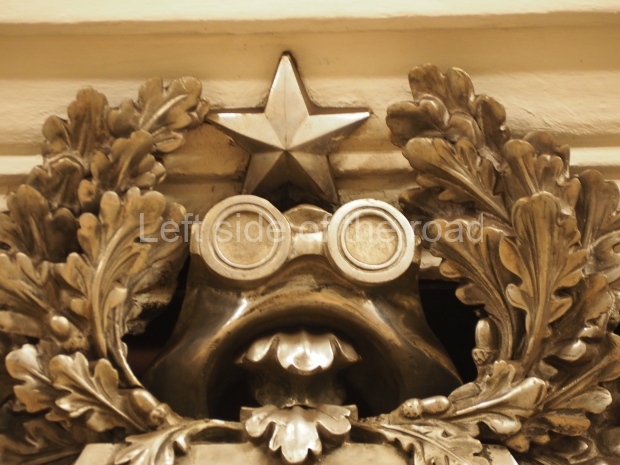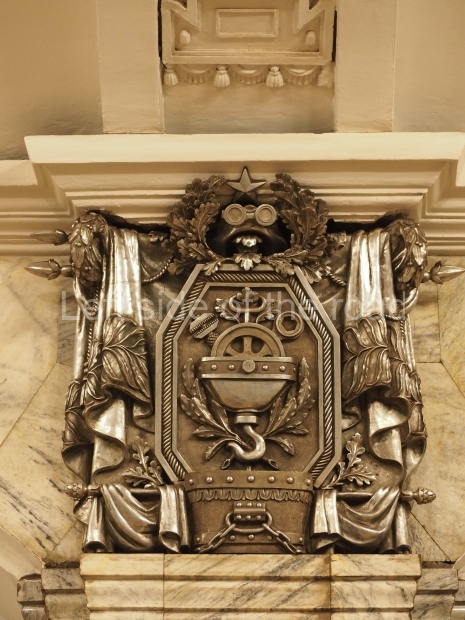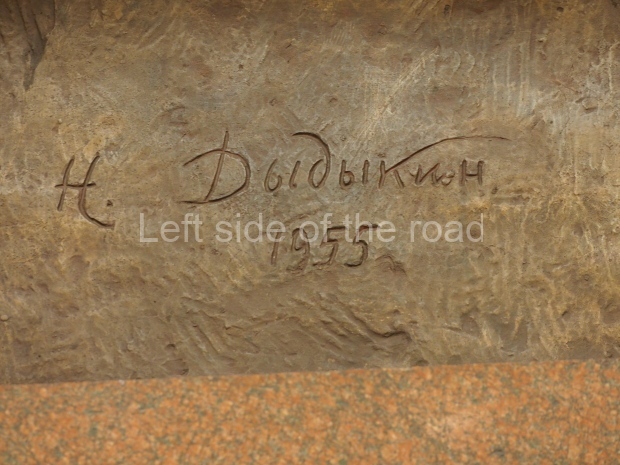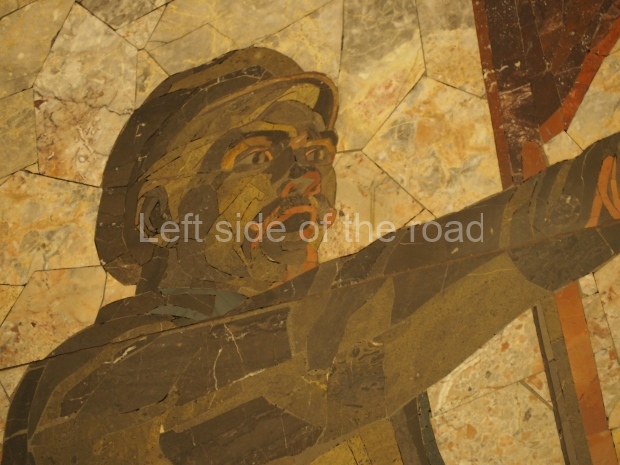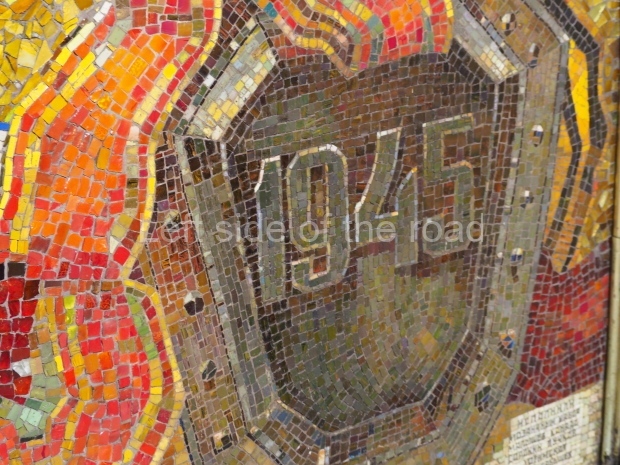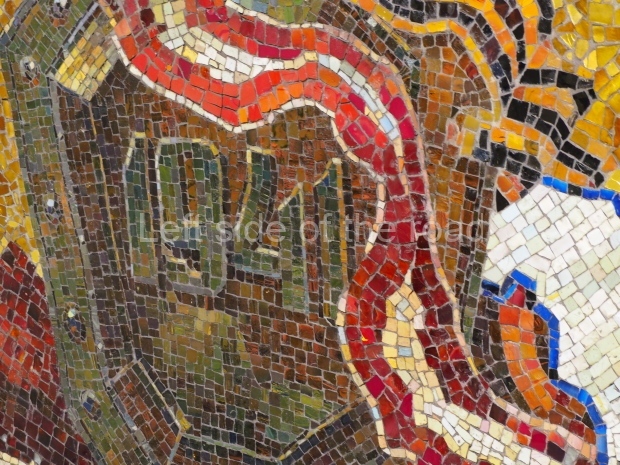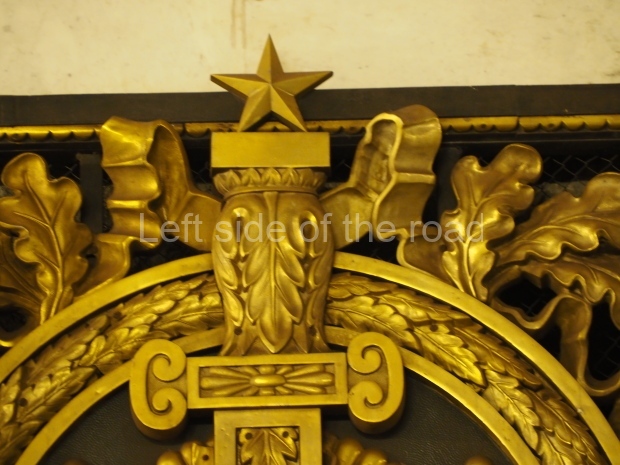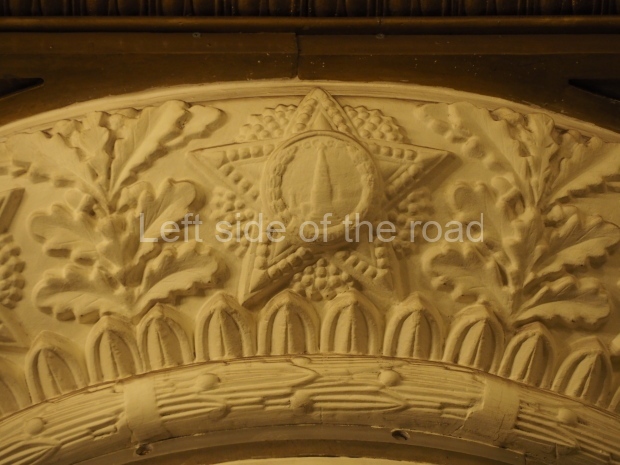Moscow Metro – the world’s biggest Socialist Realist Art Gallery
Leningrad (Saint Petersburg) Metro – Kirovsky Zavod – Line 1
Kirovsky Zavod (Russian: Ки́ровский заво́д) is a station of the Saint Petersburg Metro on the Kirovsko-Vyborgskaya Line 1. It is named after the Kirov Plant which traditionally manufactured armaments – which itself was named after the Leningrad Party leader Sergei Kirov. The station opened on 15 November 1955.
[Limited] text from Wikipedia.
The decoration at the top of the pillars on either side of the entrances from the passageway to the platforms are images that represent some of the ‘pillars’ of the Soviet economy, here in 1955. Those aspects of the economy are; oil, electricity, heavy engineering and mining. As in the more elaborate stations of the Moscow Metro not everyone of the images is unique. Here there are four which get repeated along both sides of the central passageway.
I don’t know if these are actually made of metal, as they appear, or are, on the other hand, plaster casts which have been painted with a metallic paint. What tends to go against the latter explanation is the almost pristine condition of the cast. There’s no sign whatsoever of any chipping – which does appear in some of the items in the Moscow Metro that are not all what they seem. If I get definitive information about this I’ll update. Unfortunately, to date, I have no information about the artists.
At one end of the platform is a bust of VI Lenin, dated 1955 – so presumably commissioned for the station.
Location:
Kirovsky District
GPS:
59°52′46.92″N
30°15′42.88″E
Depth:
50m (164ft)
Opened:
15 November 1955
More on the USSR
Moscow Metro – the world’s biggest Socialist Realist Art Gallery














